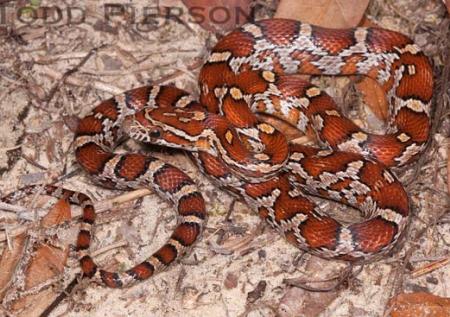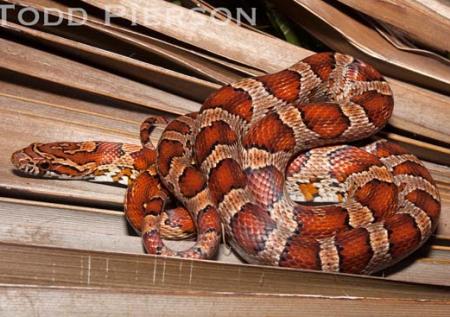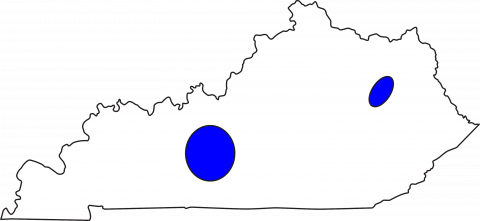Red Cornsnake (Pantherophis guttatus)

Click a thumbnail below to view the larger image:



Have you seen a Red Cornsnake?
Click the Report Snake button below to reporting seeing a Red Cornsnake.
Report Snake SightingAppearance
These colorful snakes have an orange to brown or gray colored back. Reddish to orange blotches with black borders run down the back. Red Cornsnakes bellies are flat and are covered by a black and white checkered pattern. Cornsnakes have weakly keeled scales and a divided anal plate.
Size
The typical size of an adult Red Cornsnake is approximately 3 feet, although some individuals may reach 4 feet in total length.
Habitat/Range
Red Cornsnakes are found in two populations in Kentucky. It is most common within Mammoth Cave National Park and several of the surrounding counties. Records also exist within the Red River Gorge Geologic Area. Red Cornsnakes use a variety of habitats including hardwood forests, agricultural fields and often hang around human inhabitations, especially barns.
Natural History
Red Cornsnakes mate in the spring, and up to 40 eggs are laid in June or July. Babies can be found in late summer or fall. Red Cornsnakes are constrictors. They eat mammals, birds, bird eggs and occasionally reptiles and amphibians. In turn, they are consumed by hawks, owls, mid-sized mammals, and Kingsnakes. Red Cornsnakes are considered a “Species of Greatest Conservation Need” by Kentucky Department of Fish and Wildlife Resources.
Notes/Miscellaneous
Red Cornsnakes may vibrate their tail and bite if cornered, however most individuals attempt to escape prior to resorting to this defense behavior. They are excellent climbers and escape artists, which is worth noting for those that may keep a Cornsnake for a pet.
